The Tesla Model 3 sedan is still one of the best new electric vehicles you can buy, but it’s starkly overshadowed by the popularity of its Model Y mid-size SUV sibling.

To the end of October in 2025, sales of the Model 3 were 61.33 per cent down to 5597 deliveries – whereas a whopping 14,475 were delivered during the same period in 2024.
By comparison, the Model Y was more than three times as popular with 17,972 registrations to October 31, and even that is barely breaking even on last year’s volume (up 1.31 per cent).
Why? Tesla’s range continues to be faced with an ever-increasing range of competitors, largely from new Chinese brands, but even the legacy automakers are starting to really compete in terms of both price positioning and powertrain performance – be it power output, range, charging, or a combination of all three.
It also doesn’t help that the Model 3’s sedan body style is far less popular with the Australian public. SUVs and dual-cab utes remain the flavours of the month… and indeed the decade.

Still, the 2026 Tesla Model 3 is worth a revisit as the market environment keeps shifting. Here, we’re testing the cheapest Model 3 RWD variant, which could still be the pick of the bunch.
Do good things still come in 3s? Let’s find out.
How much does the Tesla Model 3 cost?
The Model 3 RWD remains the most affordable variant in the mid-size electric sedan lineup, priced from a sharp $54,900 plus on-road costs.
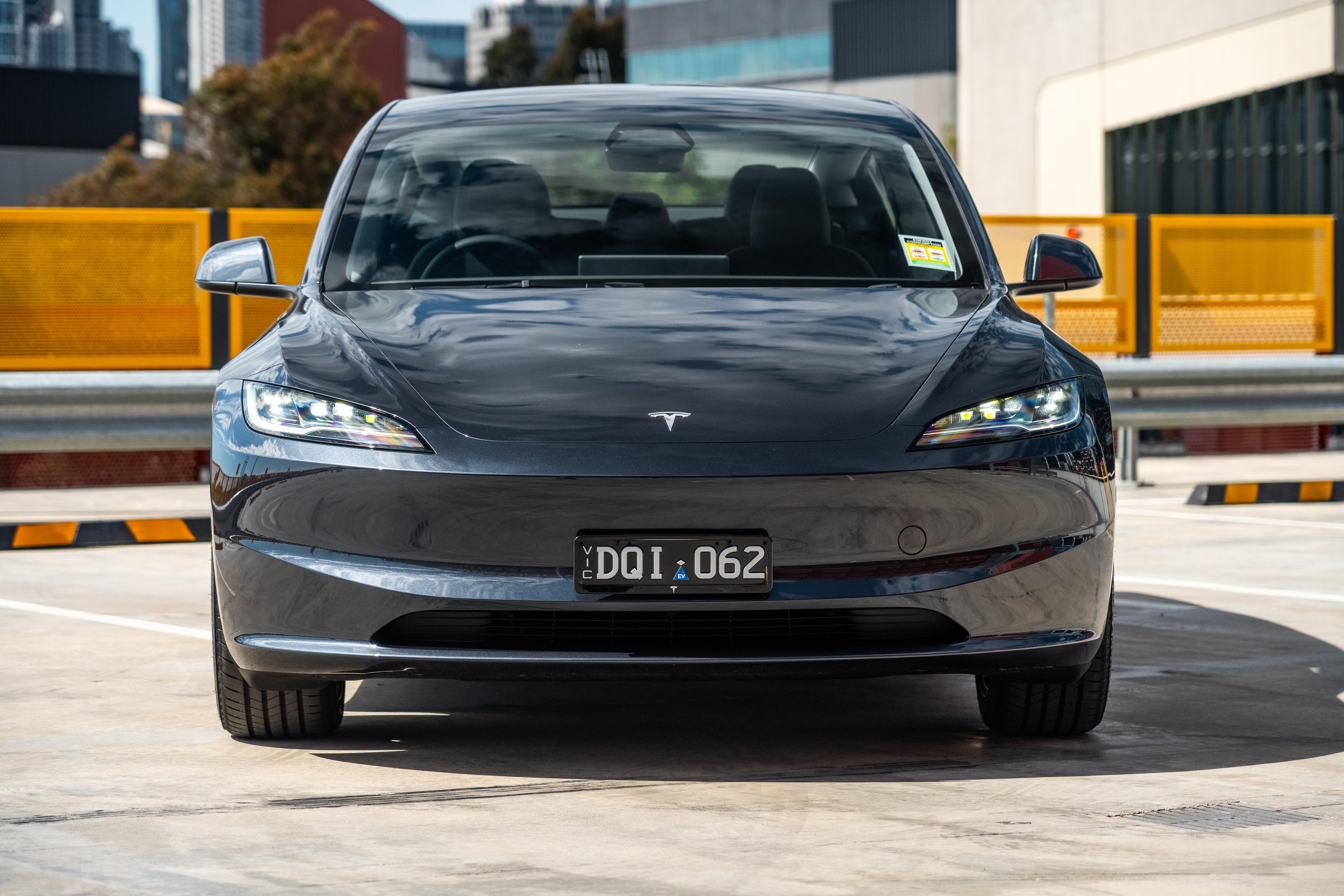
| Model | Price before on-road costs |
|---|---|
| 2026 Tesla Model 3 RWD | $54,900 |
| 2026 Tesla Model 3 Long Range RWD | $61,900 |
| 2026 Tesla Model 3 Performance AWD | $80,900 |
Key rivals include the BYD Seal (from $46,990), while the incoming Mazda 6e promises a similar starting price of under $55,000 when it arrives in Australian in 2026.
To see how the Tesla Model 3 lines up against the competition, check out our comparison tool
What is the Tesla Model 3 like on the inside?
The Model 3 was one of the first vehicles to bring the minimalist, screen-centric interior to the world.

It may have been polarising at first, but it’s now set the standard for a lot of new vehicles, particularly electric ones, with plenty of other brands looking to emulate the Tesla’s general cockpit layout to appease tech buyer tastes.
Ahead of the driver is a video game-like steering wheel, with even the indicators embedded into the spoke buttons. The updated Model Y moved away from this with a conventional stalk, and I think most will prefer that layout.
There’s no conventional instrument cluster or head-up display as you all know it, with the 15.4-inch central touchscreen being the control centre for all in-car functions that don’t have a steering wheel toggle.
The touchscreen is beautifully bright with crisp graphics and vibrant colours. Tesla’s interface is very different to most other brands, and as such can be a little tricky or overwhelming at first – even for millennial me.
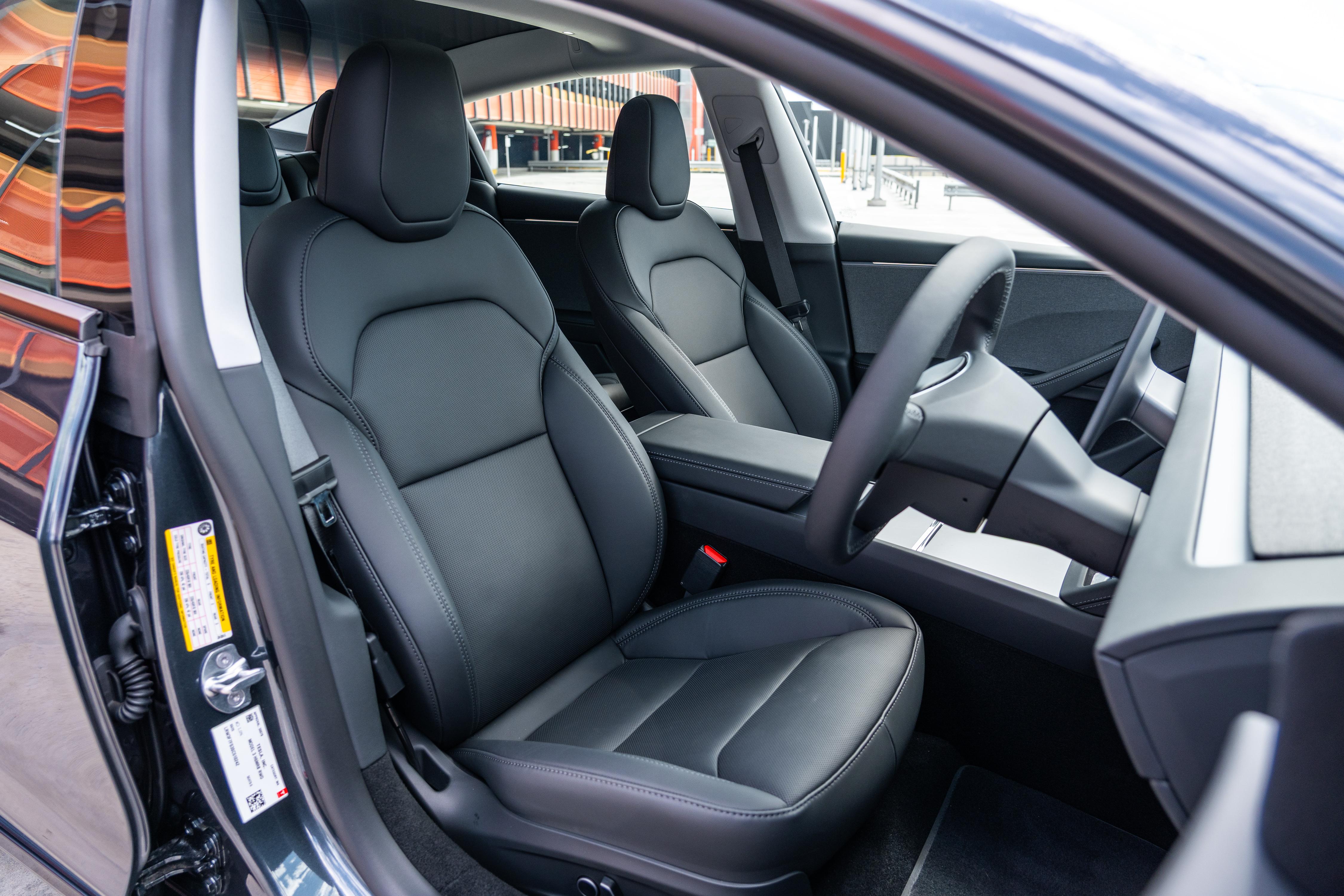

A permanent virtual toolbar at the base of the screen allows you to keep key functions and recent apps within reach, as well as quick access to the screen-embedded climate controls.
While it doesn’t take too long to get to grips with the setup, it is difficult when it comes time to adjust things like the position of the steering wheel or mirrors, because you have to dive through a cluttered menu of settings to do so, which we find a little counter-intuitive.
On the topic of fiddly touchscreen controls, I’m not a fan of the drive selector being a ‘swipe up for Drive’ and ‘swipe down for Reverse’. Quick three-point turns and parking manoeuvres take that little bit longer because there’s not a physical selector.
The wider interface is pretty good though, with easy-to-read graphics and logical menus that don’t require too many taps to find what you want. While there’s no Apple CarPlay or Android Auto, the native intelligent voice assistance and net-connected features like embedded navigation and Spotify all work really well.

Storage is pretty good, with phone charging trays beneath the screen, deep cubbies in the centre console, plus big cupholders with grips. Big door bins bolster the storage options further.
It’s also clear Tesla has come a long way in terms of fit and finish. You don’t find misaligned trim bits these days, and the cabin certainly feels almost premium.
Perhaps the most notable difference between the Model 3 and Model Y – apart from the obvious externally – is the rear seat, which isn’t as strong in the Tesla sedan as it is in its SUV sibling.
The lower seat position and roofline, combined with what feels like a higher floor, means lankier passengers like myself have to sit a little knees-up, and the sloping roofline eats into rear headroom somewhat, though the big panoramic roof makes it feel a little lighter and airier back there.
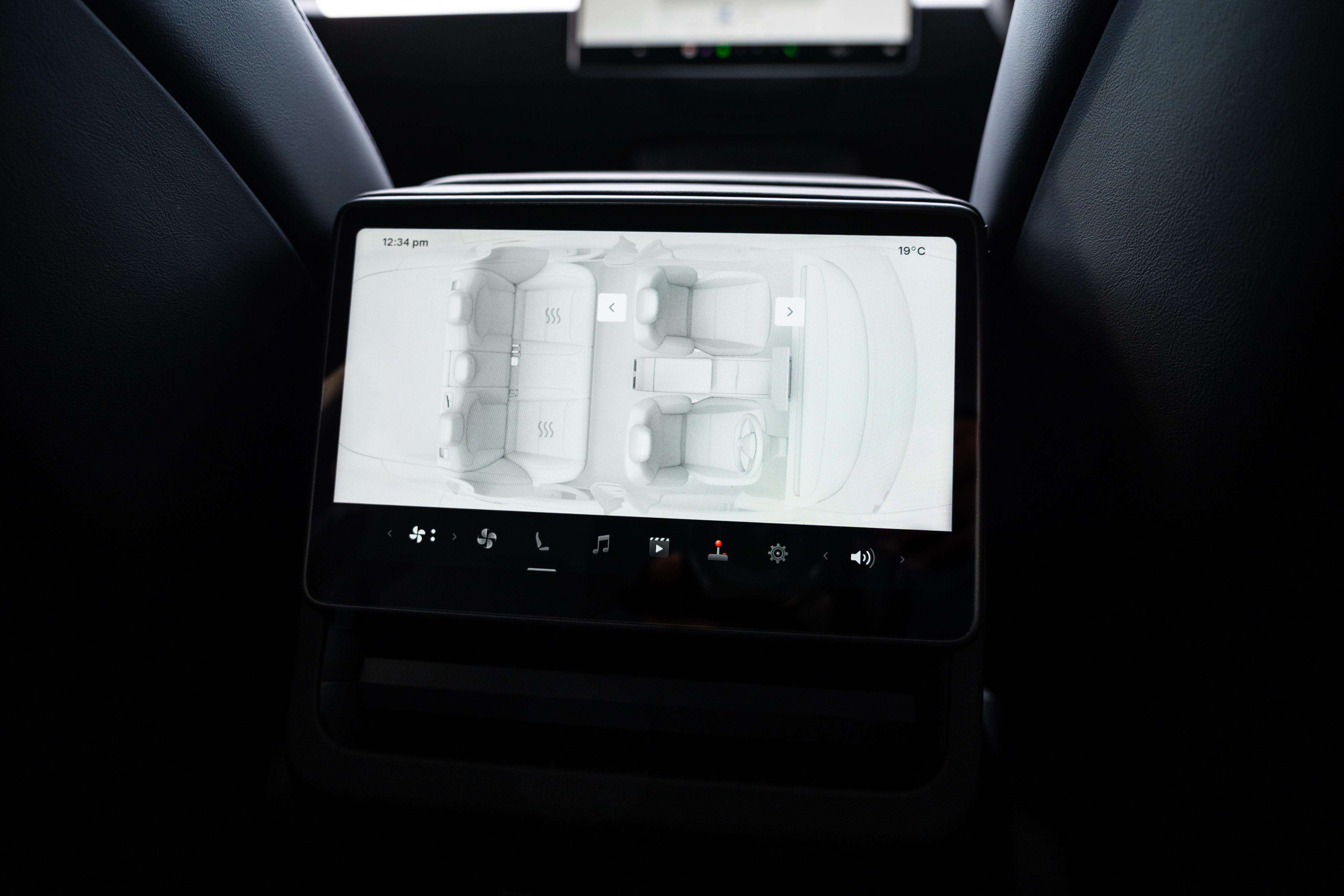
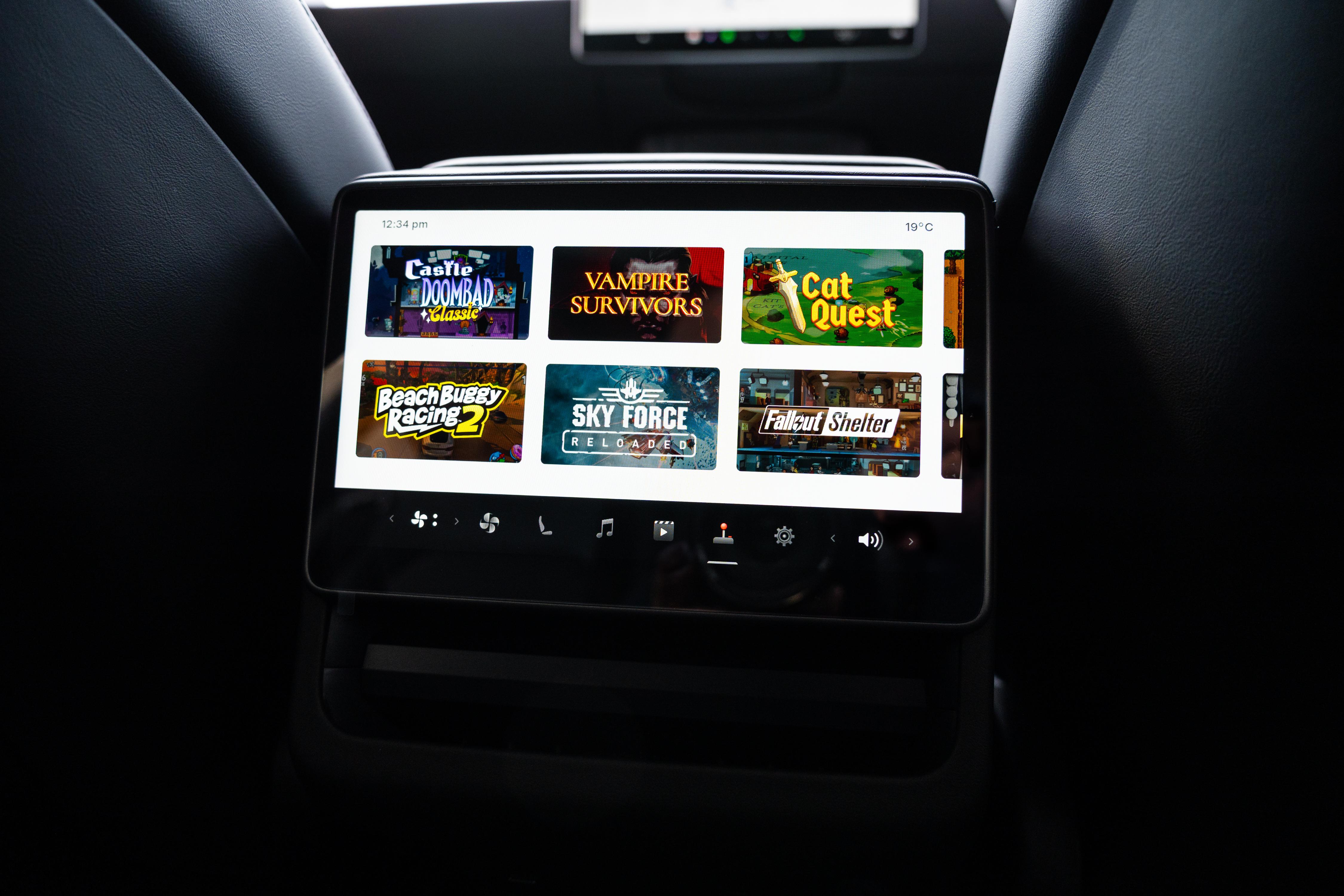
One of the Model 3’s developments for the mid-life facelift was the addition of an 8.0-inch touchscreen at the rear of the centre console, which controls second-row climate and seat heating, and there are also more unique features like a video player and video games to keep rear passengers entertained.
It also supports Bluetooth for two headsets, and below it are two USB-C charge ports. The driver is still the boss though, as the rear-facing screen can be monitored and locked through the main display up front. For parents, the optional white leatherette upholstery may not be suitable to messy kids, but you’ll find ISOFIX child seat anchors on the outboard rear seats and top-tether points for all three seating positions.
Tesla quotes up to 682 litres of cargo volume in the Model 3, split across the rear boot area and, of course, the ‘frunk’. Additionally, there are two deeper nooks on either side of the main floor.
Under the boot floor you’ll find a surprisingly deep cubby, which is an ideal space to stow smaller bags or charging cables. As is the case for most EVs, particularly at this price point, a tyre repair kit is all you have in the event of a puncture.
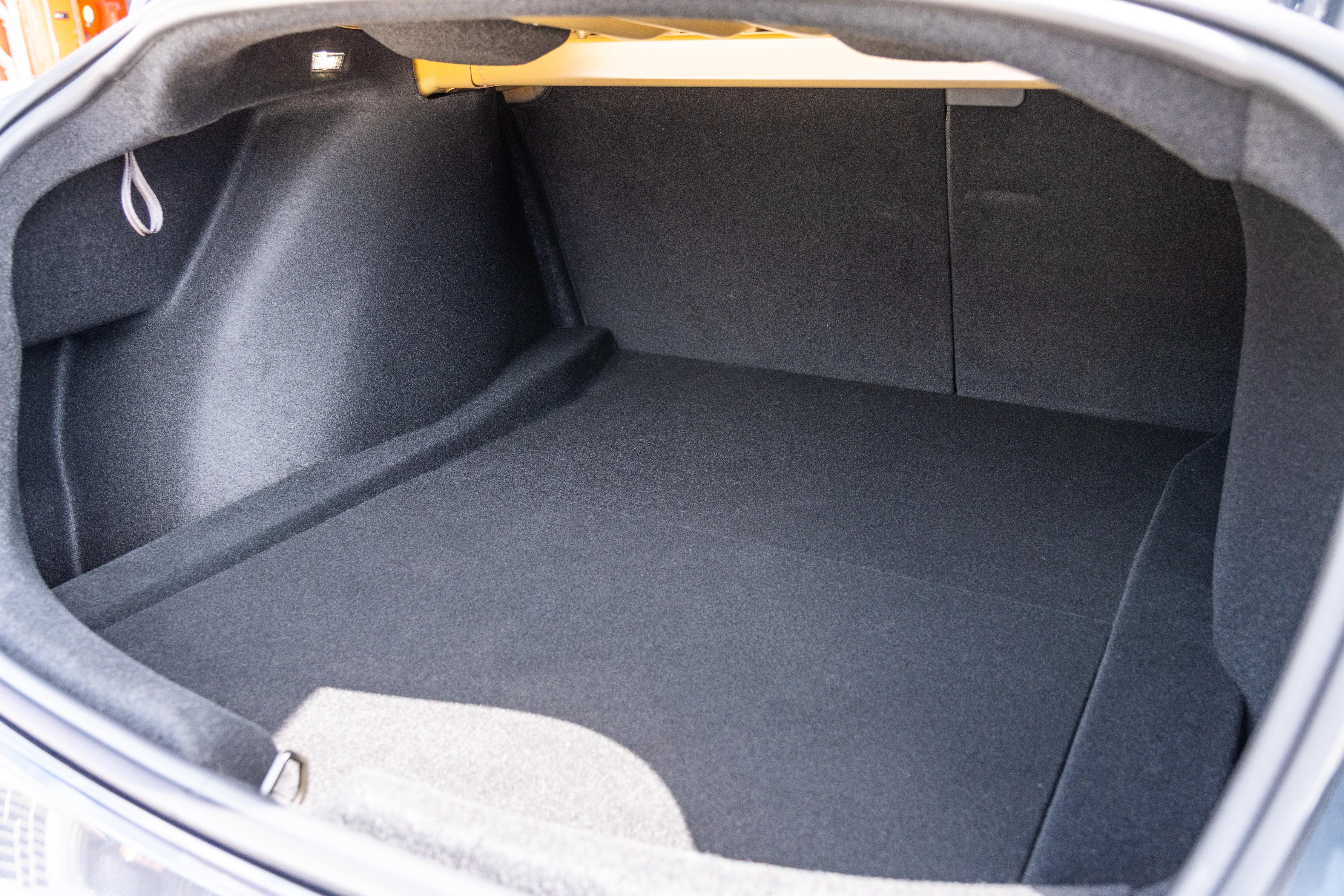
| Dimensions | Tesla Model 3 |
|---|---|
| Length | 4720mm |
| Width | 1933mm |
| Height | 1441mm |
| Wheelbase | 2875mm |
| Storage space | 682L |
To see how the Tesla Model 3 lines up against the competition, check out our comparison tool
What’s under the bonnet?
Since there’s no combustion engine, there’s a storage area under the bonnet.

| Specifications | Tesla Model 3 RWD |
|---|---|
| Drivetrain | Single motor, rear-mounted |
| Battery | 60kWh LFP |
| Power | 208kW |
| Torque | – |
| Drive type | Rear-wheel drive |
| Tare mass | 1761kg |
| 0-100km/h (claimed) | 6.1 seconds |
| Energy consumption (claimed) | – |
| Energy consumption (as tested) | 12.98kWh/100km |
| Claimed range (WLTP) | 520km |
| Max DC charge rate | 170kW |
Our rather excellent energy efficiency figure was recorded after just under 300km of mixed driving over the course of a week, including peak-hour city commuting, freeway stints, and suburban scuttling.
For reference, similar driving conditions in the related Model Y RWD yielded an indicated efficiency figure of 15.3kWh/100km in my recent test.
To see how the Tesla Model 3 lines up against the competition, check out our comparison tool
How does the Tesla Model 3 drive?
I spent two weeks back to back in the Model Y and the Model 3, and given my limited experience with both Teslas prior to that, it revealed to me why these EVs have become so popular in Australia.
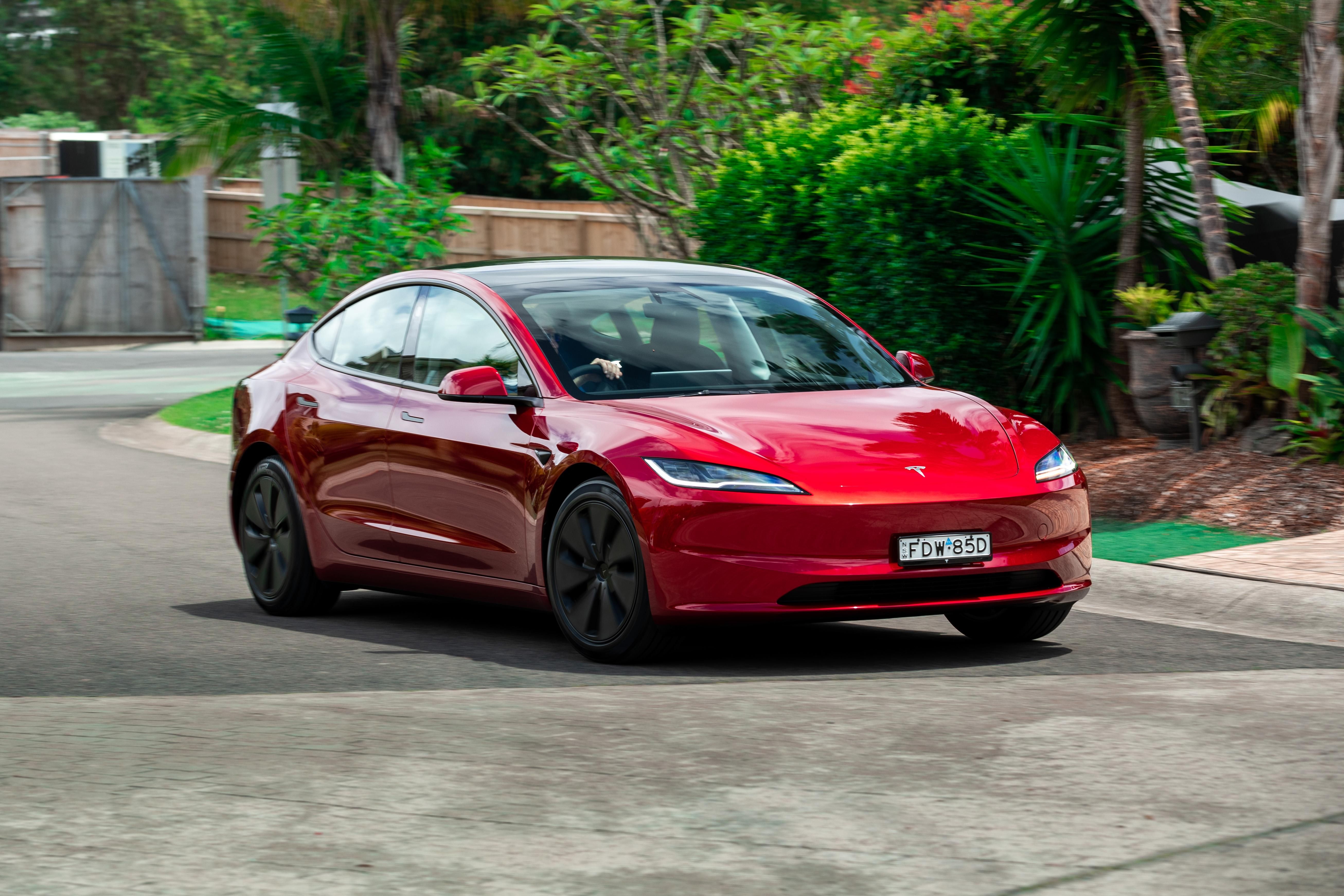
Having already been impressed by the Model Y in my recent review, the Model 3 is arguably even better behind the wheel, with its sedan body and reduced ride height lowering the centre of gravity and making for a more dynamic experience.
If the Model Y was already responsive and darty, the Model 3 amplifies that by another degree or two. Even better, it has a more supple suspension tune which is much better suited to Melbourne’s poorly-surfaced inner-city roads.
Right away I felt the added compliance and refinement – a slipperier body makes for less wind noise, I guess – and after a week with the Model Y the ergonomics weren’t that jarring, save for the steering spoke-mounted indicators.
I can see why Tesla reverted to the old-school stalk in the ‘Juniper’ update for the Model Y, as the spoke-mounted indicator buttons are just in a funny place and you’ll often press them by accident thinking they’re something else.

On pockmarked city streets, construction-laden freeways and suburban streets with speed humps, the Model 3 is brilliant. Where the Model Y is firm, and occasionally terse, the Model 3 is beautifully balanced and comfortable.
Beyond the usability quirks, the steering is quick, the chassis is well-tuned to minimise body lean, and the rear-wheel drive layout rewards keen driving and makes this a brisk and dynamic – if silent – way to get around.
Even in base trim, there’s more than enough grunt. Tesla claims a 0-100km/h time of 6.1 seconds, and the immediacy of the electric motor’s torque response will make it feel quicker at city speeds.
Refinement is also a strong point, with good insulation from road and wind noise, though even with the smaller 18-inch wheels there’s a present hum from the tyres on rougher blacktop.
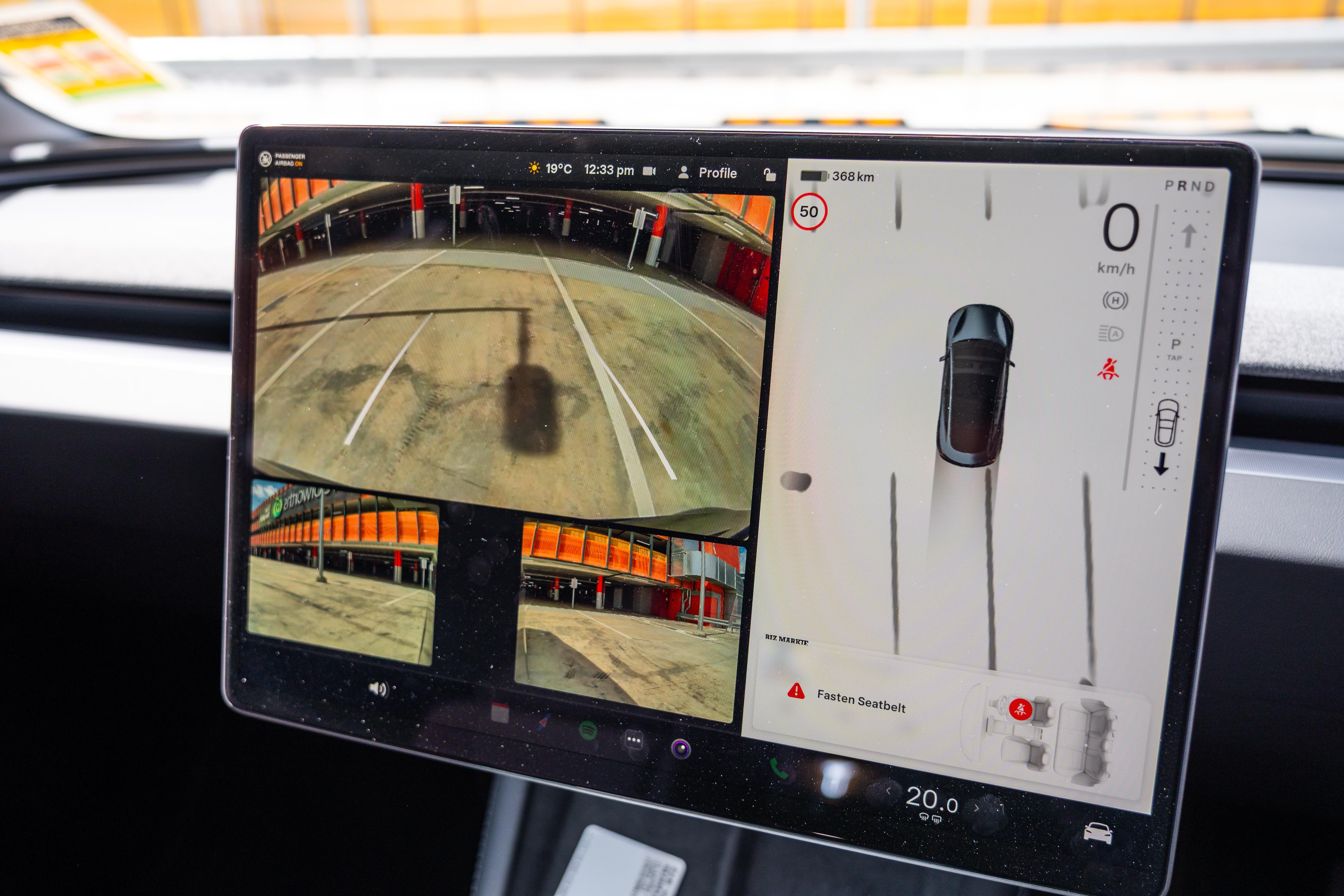
Tesla’s driver assistance systems are also up there with the benchmarks. Our test vehicle wasn’t equipped with the newly available Full Self-Driving (Supervised) system, which basically is hands-on autonomy, and the basic adaptive cruise control, lane-keep assist and blind-spot assist systems including their cameras are all super intuitive.
That said, the parking cameras are interesting, given they show video feeds and double up as the Model 3’s parking sensors to paint a picture of the vehicle’s surroundings.
I prefer a conventional 360-degree view personally, and while it’s surprisingly accurate in detecting lane markings and obstacles, it’s not entirely foolproof. Parking scenarios also require overuse of that fiddly touch-based gear selector.
To see how the Tesla Model 3 lines up against the competition, check out our comparison tool
What do you get?
The Model 3 RWD is the entry grade in the lineup.
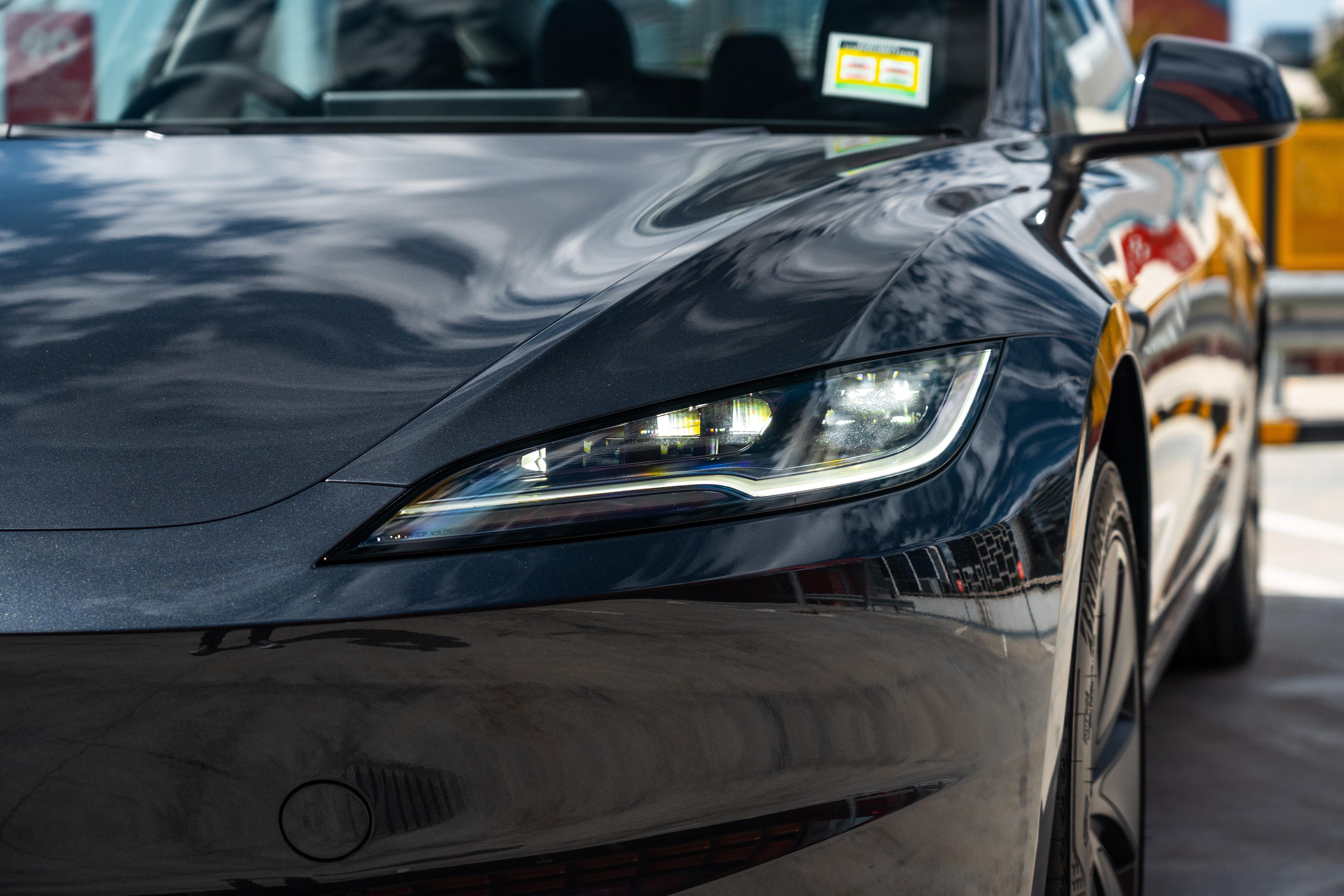


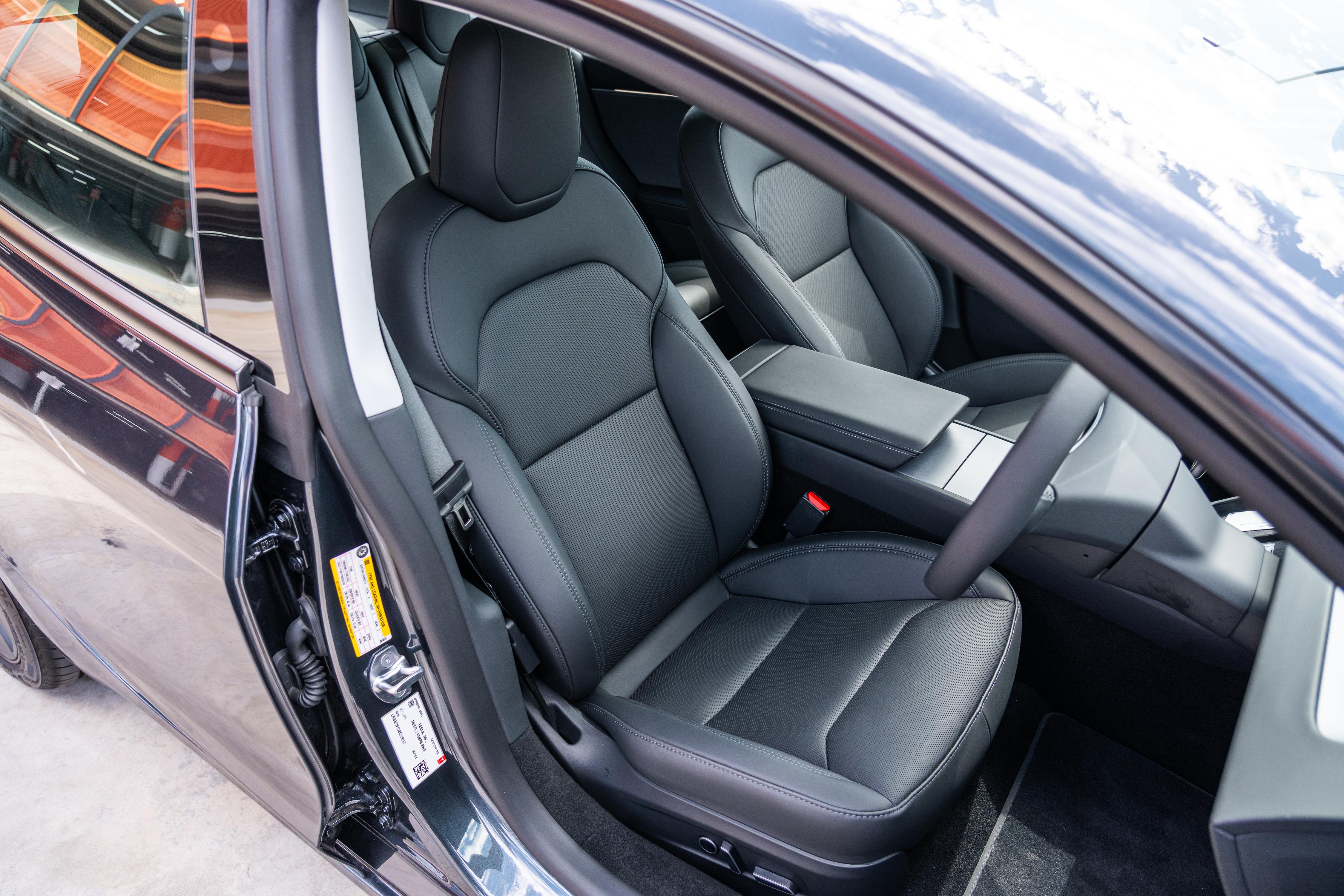
2026 Tesla Model 3 RWD equipment highlights:
- 18-inch ‘Photon’ alloy wheels
- LED headlights with integrated fog lights
- Acoustic glass
- 15.4-inch touchscreen infotainment system
- Satellite navigation
- Black interior
- Ventilated front seats
- Ambient lighting
- 8.0-inch rear touchscreen with climate, entertainment controls
- 9-speaker sound system
- Dual 65W wireless phone chargers
- Panoramic glass roof
- App connectivity
- Dog Mode
- Maintains cabin temperature
- Camp Mode
- maintains cabin temperature, keeps entertainment system on overnight
- Sentry Mode
- Monitors vehicle, notifies you of potential threats
To see how the Tesla Model 3 lines up against the competition, check out our comparison tool
Options
Several options and packages are available.

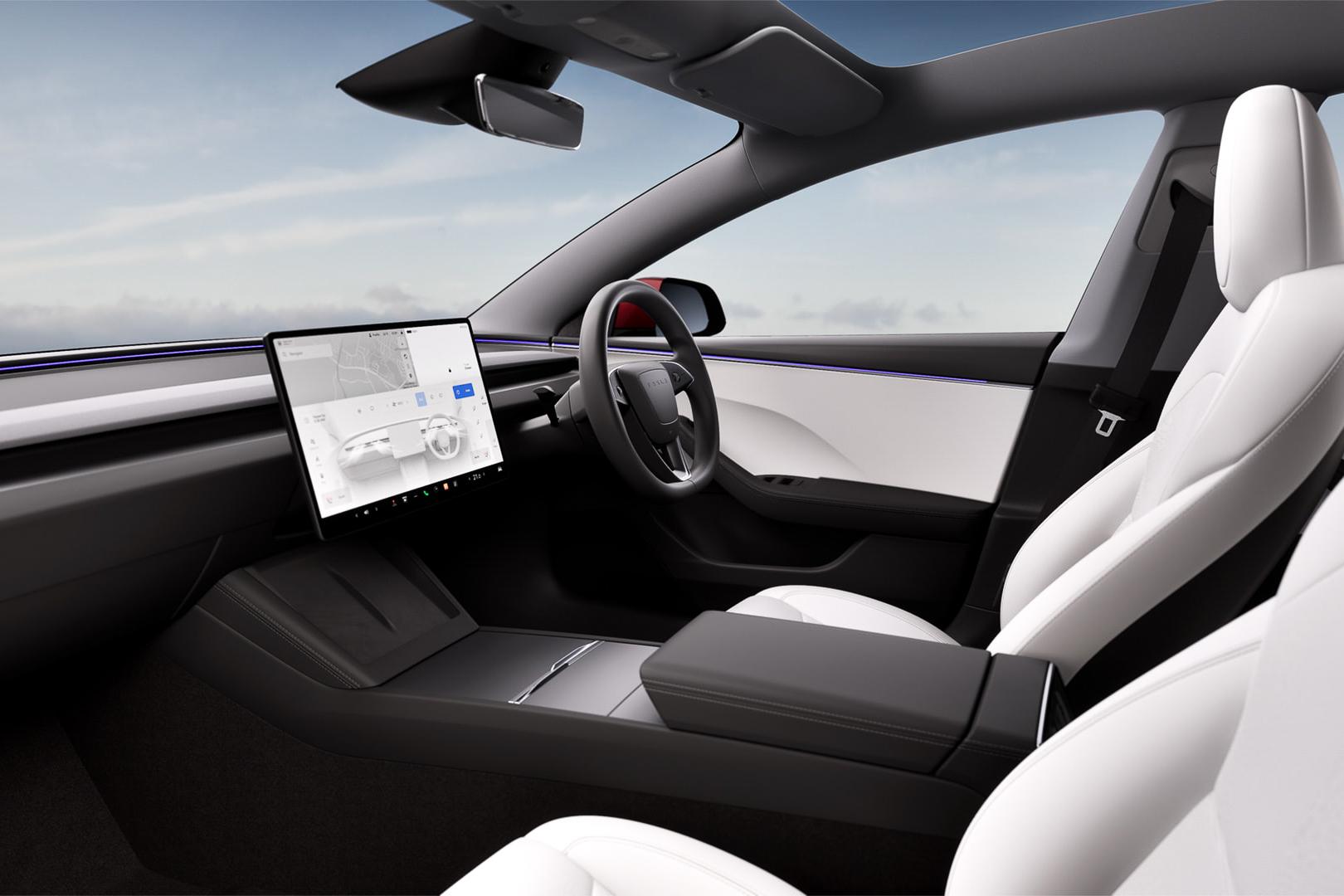
Available options for the Model 3 RWD include:
- Full Self-Driving (Supervised): $10,100
- 19-inch ‘Nova’ alloy wheels: $1800
- Black and White interior: $1500
- Diamond Black paint: $1500
- Deep Blue Metallic paint: $1500
- Stealth Grey paint: $1900
- Quicksilver paint: $2600
- Ultra Red paint: $2600
Is the Tesla Model 3 safe?
The updated Model 3 carries over the five-star ANCAP safety rating achieved by the original in 2019.
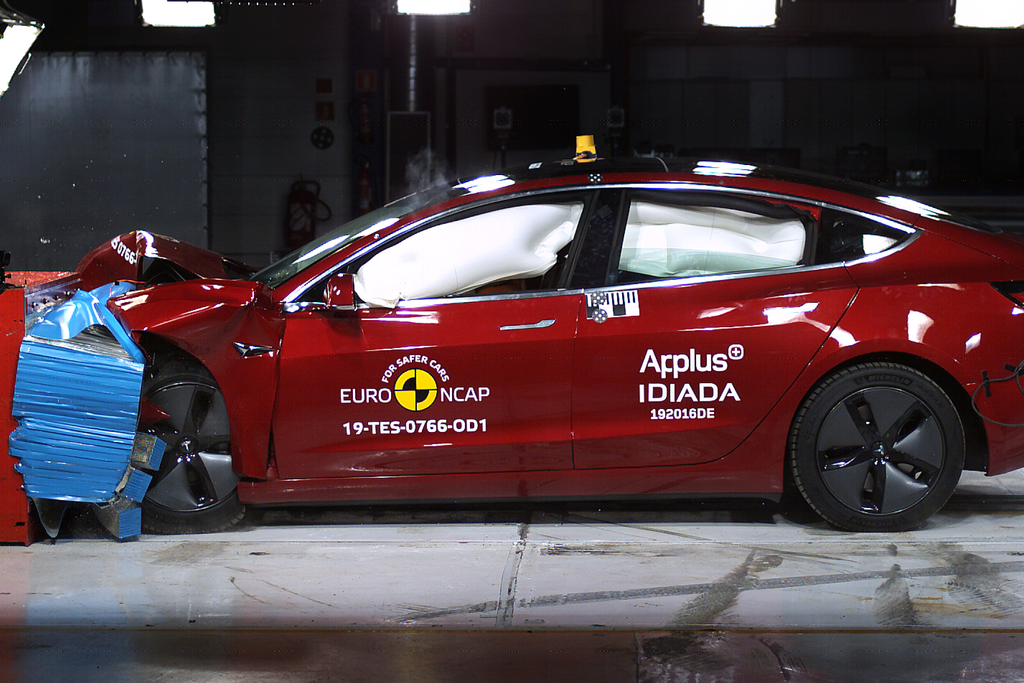
Standard safety equipment includes:
- Adaptive cruise control
- Autonomous emergency braking with pedestrian detection
- Blind-spot monitoring
- Lane-keep assist
- Parking sensors – front, rear
- Reversing camera
To see how the Tesla Model 3 lines up against the competition, check out our comparison tool
How much does the Tesla Model 3 cost to run?
Tesla backs the Model 3 with a four-year, 80,000km warranty – with a separate eight-year or 160,000km warranty for the battery and drive unit. The Long Range and Performance batteries get eight years or 192,000km of coverage.

| Servicing and Warranty | Tesla Model Y |
|---|---|
| Warranty | 4 years, 80,000km |
| Battery warranty | 8 years, 160,000km – RWD 8 years, 192,000km – Long Range |
| Roadside assistance | 4 years |
| Service intervals | – |
| Capped-price servicing | – |
| Total capped-price service cost | – |
Tesla recommends having the air-conditioning filters changed every two years, as well as rotating the tyres and checking wheel balance every 20,000km.
The Model 3 will also need to have its brake fluid checked every two years, and its pads and discs checked every 12 months in colder climates.
To see how the Tesla Model 3 lines up against the competition, check out our comparison tool
CarExpert’s Take on the Tesla Model 3
Like I said in my review of the Model Y, I’ve never been a ‘Tesla guy’ but you have to give these cars props for being objectively excellent electric vehicles – and it’s easy to see why both models have been so enduringly popular.

I’d argue the base Model 3 is the one to pick, as it’s attainable, drives beautifully, has enough range for most people, and is well specified even before you start ticking some of the exxy options.
If you’re looking to make the jump to electric, the Model 3 is an excellent choice. Like the Model Y though, it’s a bit lacking in soul and excitement, which are important things that keen drivers yearn for and which most EVs still don’t quite possess.
The RWD serves as a solid base or launchpad into Tesla ownership and, personally, I’d have one over the Model Y for its wonderfully balanced dynamic manners and on-road comfort.
Really, it’s the better car – it’s just not as popular because everyone wants SUVs.

CarExpert can save you thousands on a new Tesla Model 3. Click here to get a great deal.
Click the images for the full gallery
